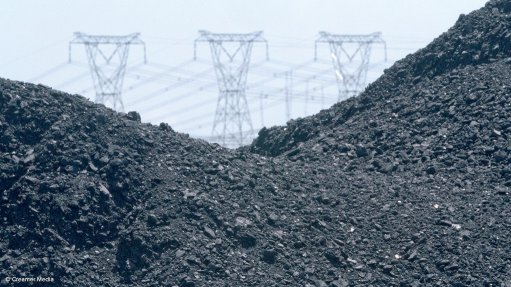Icarus
In mythology, Icarus was the son of Daedalus. The latter wanted to escape from the island of Crete and so used wax and feathers to build some wings for himself and his son Icarus. Daedalus warned his son to fly at a middle height – too low and the seawater will dampen the wings; too high and the sun will melt them. But Icarus climbed, his wings melted and he plummeted into the sea and drowned. (I cannot resist the pilot’s version of this, which states that, if a private aircraft enters the TMA, then it will melt).
Long after Icarus, it has dawned on the airline industry that jet engines are not great when it comes to pollution. Sending 300 people from Johannesburg to London so that they can see all the wonders of what the Brits do, in fact, generates 90 000 t of carbon dioxide. Transport alternatives are to go by ship, to walk, or not go at all. Some are trying to stop the pollution (and the cost) by developing electric aircraft. Let us set down some basic stuff: a Cessna 150 light aircraft, two seater, has the following stats: a 110 kW engine, a 500 km range, a cruise speed of 196 km/h and fuel capacity of about 110 𝓵. Currently, there are electric aircraft with the following specs: number of seats – four; cruise speed – 218 km/h; maximum engine power – 145 kW; maximum range – 400 km; battery powered (these are the specs for the Pipistrel Panthera).
The upside of an electric aircraft is the engine: very lightweight (20 kg for electric, versus 180 kg fuel fired), more power per unit weight, more efficient energy conversion (90% to 95% for electric, compared with 20% to 25% for fuel), reduced noise, high reliability and safety, low operating cost, easier maintenance and low pollution. There is, naturally, the requirement that the electric aircraft has to carry a battery and, unlike a fuel aircraft, where the aircraft gets lighter as the fuel is consumed, the battery weight is constant. Fuel stores more weight than lithium-ion batteries – the energy density for fuel is about 100 times that of lithium-ion batteries. Given that the electric motor is nine times lighter than a fuel motor and that fuel has to be stored in a tank, there is some offset. But the battery issue remains. This means that an electric passenger jet is pretty much not possible right now, since the passenger payload will be quite small. And now enter the magnesium air battery. A magnesium air battery has a relatively high specific energy density voltage per cell. This makes it better than a lithium-ion battery in all things save one – it is very difficult to recharge a magnesium air battery. However, in air flight, this is not needed as much as for motor vehicles. One can change out the battery or the magnesium anode every few flights – aircraft are normally on more or less fixed routes; the route choice is not really varied by the passenger in many cases.
Another option is to change the anode (one could swap it in flight) and change the electrolyte, which could be carried in tanks and consumed like fuel and discharged overboard. All this is still to come. There is a very great impetus for electric aircraft to become commercially viable. I doubt that we will ever go back to the heights of commercial and business aviation travel that existed up until now – there was a certain resistance to video meetings until recently but that has been kicked under the bus. Tourist passenger aviation will still exist but never to the same extent as previously. I am certain that passenger ships will greatly increase and, if we are lucky, very fast intercontinental trains. It is a wondrous thought to think that we may all be living in an era where aircraft go from engine to jet to electric propulsion. It is really not that very far off. Passenger electric planes can happen in my lifetime, if I’m lucky. Hopefully so.
Article Enquiry
Email Article
Save Article
Feedback
To advertise email advertising@creamermedia.co.za or click here
Comments
Press Office
Announcements
What's On
Subscribe to improve your user experience...
Option 1 (equivalent of R125 a month):
Receive a weekly copy of Creamer Media's Engineering News & Mining Weekly magazine
(print copy for those in South Africa and e-magazine for those outside of South Africa)
Receive daily email newsletters
Access to full search results
Access archive of magazine back copies
Access to Projects in Progress
Access to ONE Research Report of your choice in PDF format
Option 2 (equivalent of R375 a month):
All benefits from Option 1
PLUS
Access to Creamer Media's Research Channel Africa for ALL Research Reports, in PDF format, on various industrial and mining sectors
including Electricity; Water; Energy Transition; Hydrogen; Roads, Rail and Ports; Coal; Gold; Platinum; Battery Metals; etc.
Already a subscriber?
Forgotten your password?
Receive weekly copy of Creamer Media's Engineering News & Mining Weekly magazine (print copy for those in South Africa and e-magazine for those outside of South Africa)
➕
Recieve daily email newsletters
➕
Access to full search results
➕
Access archive of magazine back copies
➕
Access to Projects in Progress
➕
Access to ONE Research Report of your choice in PDF format
RESEARCH CHANNEL AFRICA
R4500 (equivalent of R375 a month)
SUBSCRIBEAll benefits from Option 1
➕
Access to Creamer Media's Research Channel Africa for ALL Research Reports on various industrial and mining sectors, in PDF format, including on:
Electricity
➕
Water
➕
Energy Transition
➕
Hydrogen
➕
Roads, Rail and Ports
➕
Coal
➕
Gold
➕
Platinum
➕
Battery Metals
➕
etc.
Receive all benefits from Option 1 or Option 2 delivered to numerous people at your company
➕
Multiple User names and Passwords for simultaneous log-ins
➕
Intranet integration access to all in your organisation


















